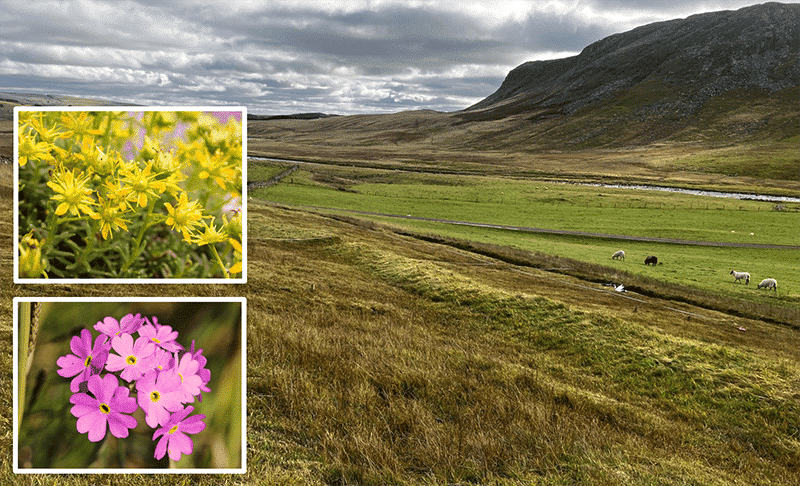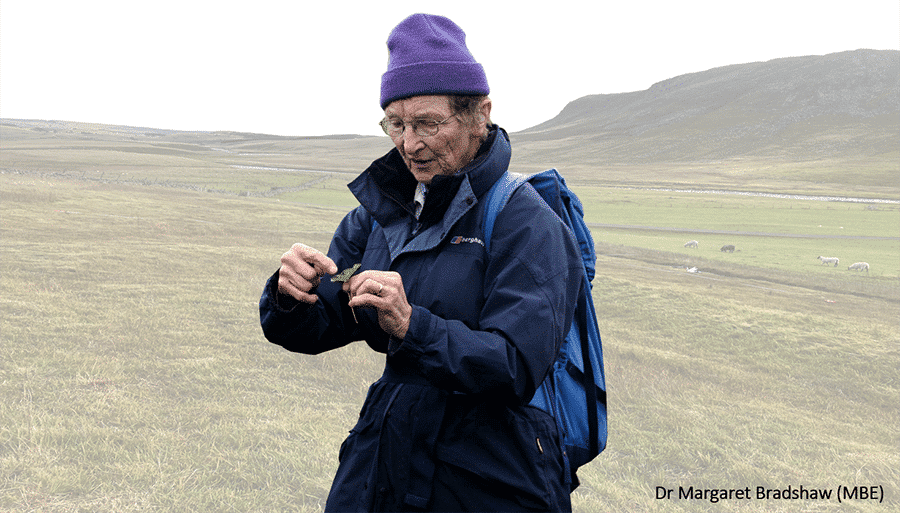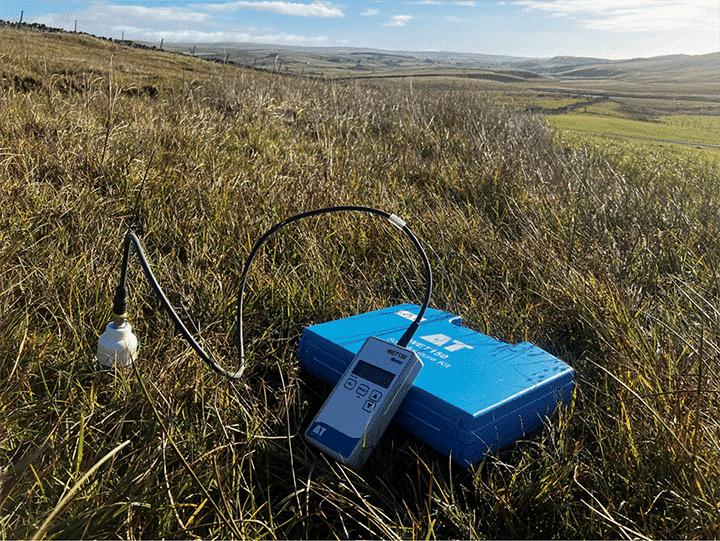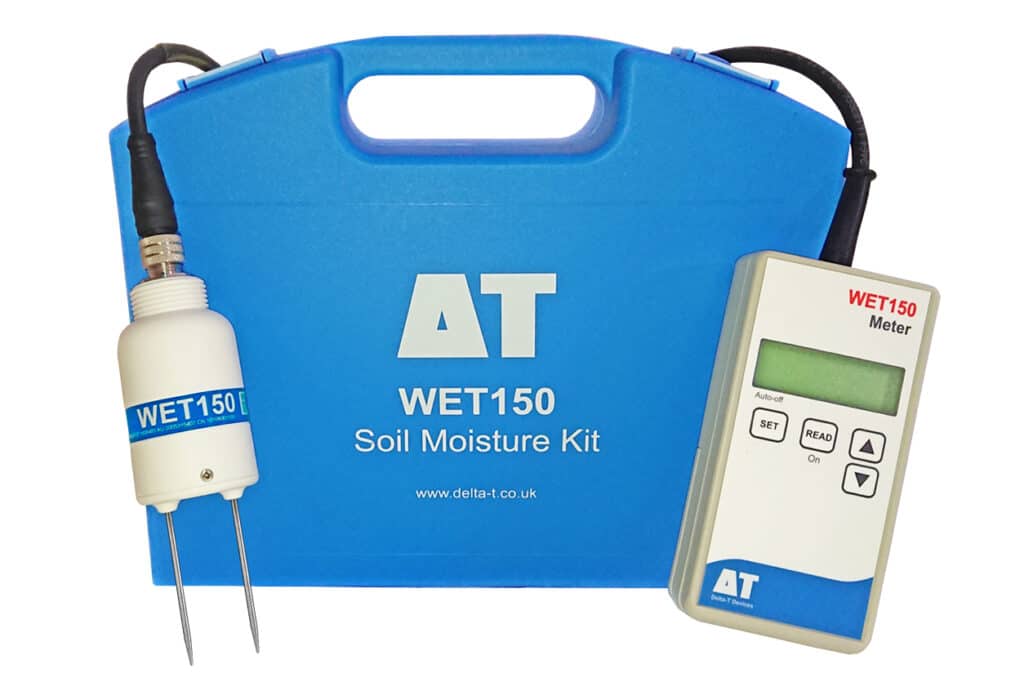Rare Flora under threat at important UK botanical site

Upper Teesdale is a Site of Special Scientific Interest in County Durham, North East England. It is a diverse environment consisting of mainly dry heath – but with notable areas of wet heath and mire complexes in poorly drained areas.
The area is considered one of the most important botanical sites in the UK, and is exceptionally rich in rare species of flora, including relicts of the arctic-alpine environment of the last glacial period.
However, Upper Teesdale’s unique assembly of special flora is in crisis. Recent surveys have demonstrated average declines of over 50% since the 1970s and 28 species are currently threatened with extinction.
Dr. M.E. Bradshaw’s fight to save Upper Teesdale’s rare plants
96-year-old Dr Margaret Bradshaw (MBE) is a nationally renowned botanist, specialising in plant conservation. Since the 1950s she has devoted much of her professional career to the study and protection of the rare plants in Upper Teesdale.

Dr Bradshaw oversees annual plant population studies at two key Teesdale locations: Widdybank and Cronkley Fells. She frequently travels on horseback to visit some of the remote locations and her research is assisted by specialist scientists and a group of trained volunteers (in close liaison with Natural England).
The data obtained from these detailed studies has become of great significance, clearly showing the recent alarming declines in many important rare species. It was largely these results that prompted Margaret to set up her charity, the Teesdale Special Flora Research & Conservation Trust, in 2017, which aims to reverse the declines, and increase awareness of the ecological importance of the area.
Species recovery research conducted by Dr David Oatway in Widdybank Meadow – using the WET150 Soil Sensor
One of the most important locations for rare and vulnerable plants in Upper Teesdale is Widdybank Fell, one of very few places in Britain where ‘sugar limestone’ rock reaches the surface. Dry grassland and wet flushed habitats on the sugar limestone support several of the threatened species. On the edge of this fell is a mire complex fed by calcareous springs, which supports a number of rarities including Bird’s‐eye Primrose, Alpine Bartsia and Yellow Saxifrage.

Dr David Oatway, an Ecologist and research consultant at Ketmar, has recently been contracted by the Teesdale Special Flora Research and Conservation Trust in a bid to better understand the reasons why many of the rarer plants are in decline – and help devise strategies for improved protection.
David explains, “I’ve been setting up trials to help with the recovery of some of the rarest plant species in the British Isles, and this site – Widdybank Meadow, contains a calcareous mire complex in which the diversity of rare plants is incredible, however it is threatened by the influx of more aggressive sedges and rushes.”
The hydrology in this location is one of the key factors thought to be underlying this destructive influx of less desirable flora. It is thought that such a situation could have arisen as a result of reduced flow of water through the mire (a consequence of the sward closing up) – resulting in increased acidic surface water that favours the problematic ‘influx’ plants.
The implication is a positive feedback loop between acidification of the surface water and closing of the sward.
Water flow and acidity levels
In 2021 a naturally closed historical drain was reopened to increase water flow away from the mire (an unusual and site-specific experimental process). The hand digging of this drain revealed that there is a 10-12cm raw humus layer present over the glacial till, which is also thought to be favouring the acid-loving plants at the expense of the rarer arctic, alpine and montane plants.
David continues, “I’m examining the differences in the moisture content of the soil surface above and below the newly opened drain, as well as within the calcareous mire more generally, to see if these correlate with any changes in vegetation composition.
I’m also looking at pH levels, as it is suspected that water which sits longer on this mire may become more acidic, affecting the growth of certain plants.”
Selecting a soil moisture sensor
In order to precisely assess the varying moisture levels in Widdybank Fell, David needed a soil sensor that could measure equally well in both drier and very wet soils.
After an extensive search he decided upon the WET150, a digital sensor whose moisture reading precision is notably enhanced by compensation for variations in the electrical conductivity of the soil (which it also measures).

The portable Wet150 Sensor and readout meter kit used at Widdybank Fell.
David’s research includes dividing the Widdybank Meadow target measurement areas into an extensive grid layout and mapping out the soil moisture and pH values to look for variations. (pics a & b).

Pic a. Soil moisture grid measurements on Widdybank Meadow.

Pic b. pH grid measurements on Widdybank Meadow.
WET150 moisture measurement performance in the calcareous mire
David’s experience of using the WET150 Sensor and kit at Widdybank Fell has been positive.
He says, “It was clear from this project’s inception that I needed a soil sensor which was particularly good at differentiating well at high moisture levels.
I’ve now had the opportunity to thoroughly test the WET150 in the field and I’m pleased to say that it appears to have been very effective at recording percentage moisture in a the wet calcareous-fed mire environment.
Knowing the topography of the site as I do, I can say that the data visuals we have created using the WET150’s output are really exciting.
More about the WET150 Multi-Parameter Soil Sensor
When inserted into soil or substrate the SDI-12 compatible WET150 Sensor simultaneously measures three crucial variables that influence plant growth: moisture content, temperature, and electrical conductivity (EC) – a strong indicator of the general nutrient level.
An important feature of the WET150 is its ability to reliably calculate pore water conductivity (ECp), which is the ion content of the water available to the plant.
The WET150’s patented sensor electronics produce research grade measurement accuracy with exceptional salinity and temperature stability.
In kit form (alongside a dedicated hand-held readout unit) the WET150 provides a portable rugged solution for researchers who need to assess moisture and salinity conditions in soils.

More info on the WET150 Soil Sensor

The species recovery plan featured in this case study is part of the Teesdale Special Flora Research & Conservation Trust’s Plants on the Edge project funded by the Green Recovery Challenge Fund.

